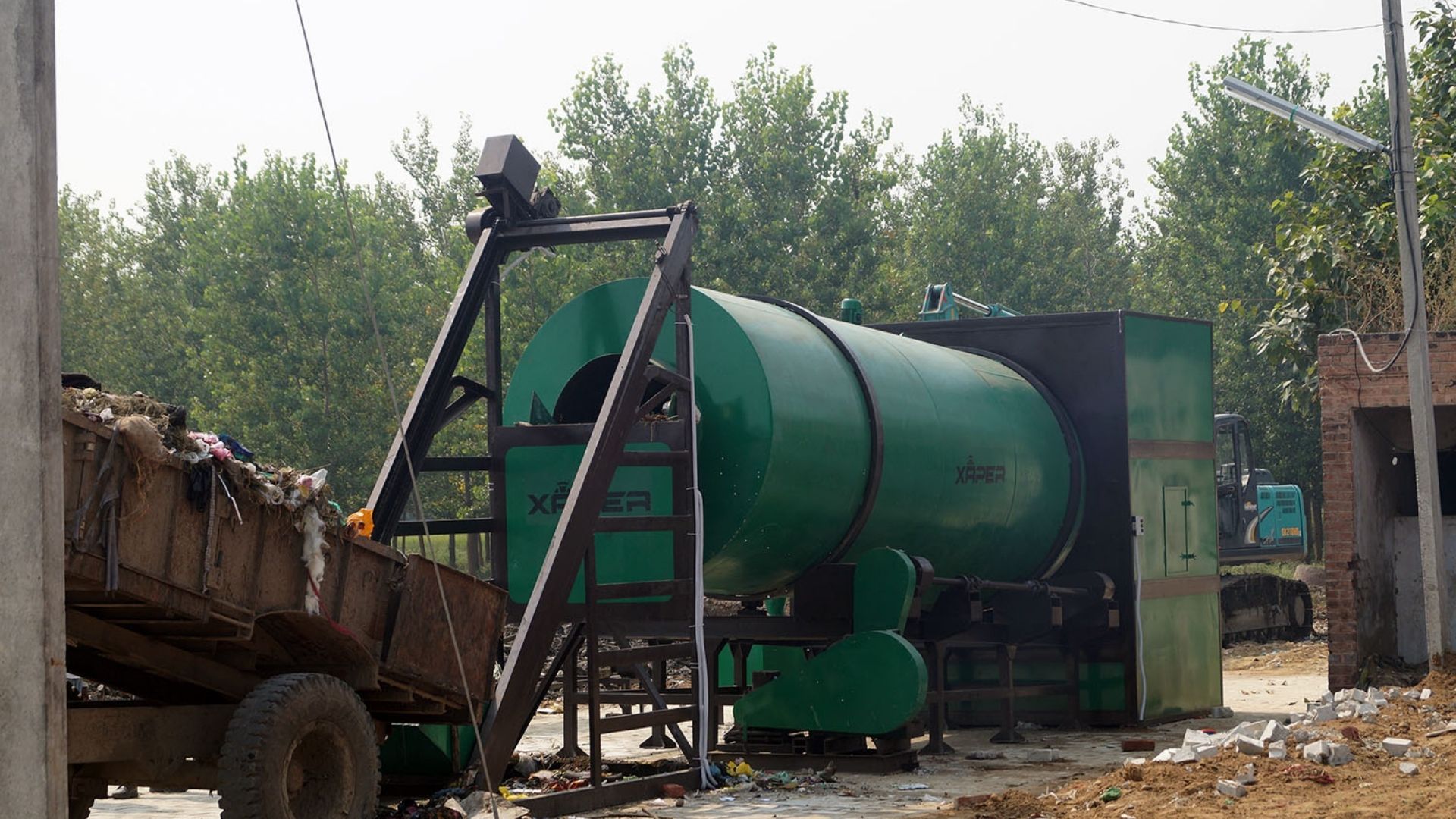Jasmeet Kaur’s Nexus-incubated start-up designs and creates effective waste management solutions.
March 2019

XAPER, a sorting and composting machine, which reduces over 70 percent of the waste going to landfills through segregation. Photograph courtesy Jasmeet Kaur
Efficient waste management is one of the biggest challenges in today’s world. The waste processing industry is transitioning from dumping to redirecting modern civilization’s garbage, in many parts of the world. However, the sticky problems of exponential waste increase and environmental pollution from overflowing landfills are not going away anytime soon.
Nevertheless, Jasmeet Kaur’s Palta Engineering Works, with its mission of helping to create “zero waste” cities and the vision of a clean environment achieved by managing and exploiting the latent potential of waste, seems to have a solution.
Reduce, reuse, recycle
Kaur is the manager of technical and business development at the Punjab-based start-up. It has designed and created a sorting-cum-composting machine, named XAPER, to segregate different waste streams into biodegradable and non-biodegradable materials. The former are processed into compost while the latter, together with recyclables, emerge out at the far end.
Palta’s initial trials for the patented machine yielded an impressive 70 to 85 percent reduction in waste going to the landfill. This translates into reduced landfill transportation and dumping costs, along with substantial reduction in carbon dioxide emissions from trucks. Additional benefits include decrease in air and groundwater pollution as well as a marked increase in the retrieval rate of recyclables.
Kaur credits the Nexus Incubator with reinvigorating them to move in the right direction; helping them to critically segment and then target their market. The Nexus Incubator at the American Center New Delhi is a collaboration with IC2 Institute at The University of Texas at Austin. It supports innovative, promising start-ups with training, mentoring and networking with industry and government experts from the United States and India.
With a background in biotechnology and waste management, Kaur calls it “serendipity” that she began Palta. “Nature arranges for disposal of anything it creates. Dung beetles, for instance, carry out the job of scavengers in a natural habitat, cycling nutrients in the soil as they bury dung or carrion,” she says. “Ancient Egyptians revered the dung beetle god ‘xpr’ and, fascinated by this creature, we named our waste processor XAPER.”
Decentralized management
According to Kaur, the beauty of XAPER is its simplicity. “There is a need for a compact, covered, quick and decentralized waste processing system,” she says. One XAPER machine can serve a population of 25,000 people, with the capacity to process 100 to 30,000 kilograms of waste per day.
Locating the machine close to the source of waste generation is key. XAPER separates waste into three different waste streams, while simultaneously decomposing wet food waste into bio-dried compost material within 24 hours. Palta’s machine is engineered for aerobic decomposition, where organic materials decompose in the presence of oxygen. The machine ensures there is no chance of leachate percolating into the groundwater or greenhouse gas generation.
It can be installed for bulk waste generators in residential areas, at institutes and at collection or transfer points. “XAPER is above ground, while the machine’s underground storage and feeding system envelops and covers all the garbage, with no odor or harmful emissions to the surrounding area,” says Kaur.
XAPER advantage
To segregate the waste streams, XAPER replaces the traditional multiple trommel screening system with a single system, which uses both a 100 millimeter and a 12 millimeter screen. The 100 millimeter screen is placed inside a drum composter, open on both ends to eliminate plastics, cloth and other wastes above that size from the wet waste stream as well as provide air to decompose biodegradable waste. Wet food waste becomes dried compost, while paper, plastics and other non-biodegradables fall out of the drum as recyclables and rejects. An added bonus of the system is that the rejected material, like non-recyclable plastics and cloth, can go on to become combustibles for waste-to-energy plants or get converted into fuel.
The efficiency of the XAPER system not only leads to reduced costs for the waste processor, but also boosts green livelihood opportunities for workers. “Palta was able to demonstrate a 70 percent savings in transportation and dumping fees for the municipal services of Delhi Cantonment Board, with a promise for the recovery of capital within two years of XAPER installation,” says Kaur. But, she adds, “the bigger bonus was XAPER’s 90 to 95 percent retrieval rate for recyclables. Waste pickers experienced three times the earning power from the volume of recyclables they can gather and sell to scrap collectors.”
Next steps
Kaur and her team at Palta plan to replicate the success of their pilot program throughout Delhi and use the model in other regions of India as well as other countries. “There are immense opportunities across the globe, as we all face the same problem with 80 to 90 percent of our garbage going to landfills. We need to synchronize with nature. We generate waste and it is our fundamental duty to get it decomposed in an environment-friendly manner,” she says. “Soon, through the application of Palta’s breakthrough
technology, we will have a reason to smile because we will manage waste to our advantage.”
Hillary Hoppock is a freelance writer, former newspaper publisher and reporter based in Orinda, California.
COMMENTS